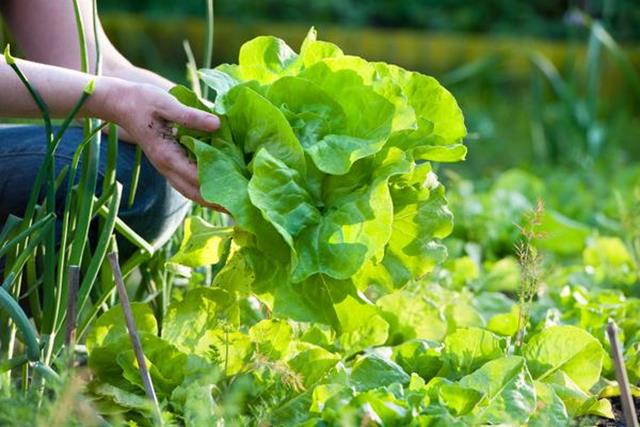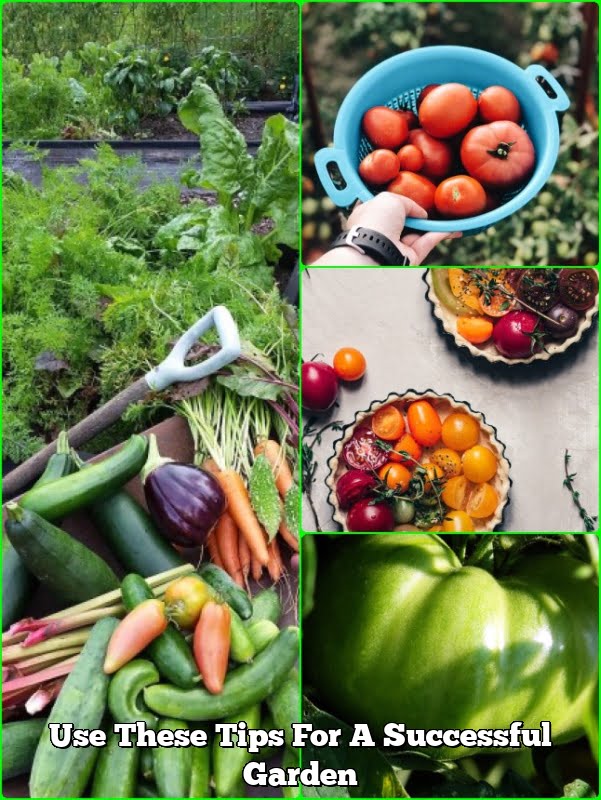Are you interested in starting a successful vegetable gardening project? Whether you are a beginner or have some experience, this comprehensive guide will provide you with the essential steps to achieve a flourishing vegetable garden. From selecting the right location to maximizing yields, we will cover every aspect of successful vegetable gardening.
When it comes to cultivating your own vegetables, there is nothing quite as satisfying as being able to grow your own produce. Not only does it provide a source of fresh and nutritious food, but it also offers a rewarding and enjoyable outdoor activity. With the right knowledge and commitment, anyone can achieve success in their vegetable garden.
In this article, we will explore key topics such as choosing the best location for your garden, preparing the soil for planting, selecting suitable vegetables for your climate, effective planting and watering techniques, pest and disease control measures, ongoing maintenance throughout the growing season, harvesting and preserving your homegrown vegetables, as well as practical tips for optimizing yields.
By following these guidelines and putting in the necessary effort, you can create a bountiful and thriving vegetable garden that will continue to yield delicious results.
Selecting the Right Location for Your Garden
Sunlight Requirements
One of the most important factors to consider when selecting a location for your vegetable garden is sunlight. Most vegetables require at least 6-8 hours of direct sunlight each day to thrive. Take note of the path of the sun throughout the day and find a spot in your yard that receives adequate sunlight.
Soil Quality
The quality of soil in your chosen location is also crucial for successful vegetable gardening. Conduct a soil test to determine its pH level and nutrient content. Vegetables generally thrive in well-drained, loamy soil with a pH level between 6.0 and 7.0. If your soil lacks nutrients, consider amending it with organic matter such as compost or aged manure.
Accessibility and Water Source
Consider the accessibility of your chosen location, especially if you are planning a larger garden. Make sure it’s easily accessible for planting, weeding, and harvesting. Additionally, ensure there is a nearby water source for irrigation purposes. Access to water is essential for maintaining healthy plants throughout the growing season.
When selecting the right location for your garden, keep in mind these factors to create an ideal environment for successful vegetable gardening. With proper sunlight, quality soil, and accessibility to water, you can set the stage for a bountiful harvest of homegrown vegetables.
Preparing the Soil for Planting
When it comes to successful vegetable gardening, one of the most important factors to consider is the quality of the soil in which your plants will be growing. Preparing the soil for planting is essential for providing a healthy environment for your vegetables to thrive.
Testing and Amending Your Soil
Before you start planting, it’s crucial to test the pH and nutrient levels of your soil. You can do this using a simple DIY test kit or by sending a sample to a professional lab. Based on the results, you may need to amend your soil with organic matter, compost, or other nutrients to ensure that it is rich and fertile.
Tilling and Aerating the Soil
Once you have tested and amended your soil, it’s time to till and aerate it. This process helps break up compacted soil, improve drainage, and create a loose, crumbly texture that is ideal for plant roots to grow and spread. Use a garden fork or tiller to loosen the top few inches of soil, being careful not to overdo it and disturb beneficial organisms living in the soil.
Adding Mulch for Moisture Retention
Finally, consider adding a layer of mulch around your plants once they are in the ground. Mulch helps retain moisture in the soil while also suppressing weed growth and regulating soil temperature. This simple step can make a big difference in maintaining an ideal environment for successful vegetable gardening.
By taking the time to properly prepare your soil for planting, you can set the stage for a bountiful harvest of homegrown vegetables. With healthy, nutrient-rich soil, your plants will be better equipped to resist pests and diseases while producing delicious, nutritious produce for you and your family to enjoy.
Choosing the Best Vegetables for Your Climate
When it comes to successful vegetable gardening, one of the most important factors to consider is choosing the right vegetables for your climate. Different vegetables thrive in different climates, so it’s crucial to select varieties that are well-suited to the environmental conditions in your area.
Before you start planting, take some time to research which vegetables grow best in your specific climate. For example, if you live in a region with hot summers and mild winters, you may want to consider planting heat-tolerant vegetables such as tomatoes, peppers, and squash. On the other hand, if you’re in a cooler climate with a shorter growing season, cold-hardy crops like lettuce, broccoli, and carrots may be better choices.
It’s also important to pay attention to the length of your growing season when selecting vegetables for your garden. Some crops require a longer period of warm weather to reach maturity, so be sure to choose varieties that can realistically be grown within the constraints of your local climate.
Finally, don’t forget to consider factors such as rainfall and humidity when choosing vegetables for your garden. Some plants are more resistant to disease or pests that may be prevalent in certain climates, so make sure to take these factors into account as well.
| Climate | Recommended Vegetables |
|---|---|
| Hot summers/mild winters | Tomatoes, peppers, squash |
| Cooler climate/shorter growing season | Lettuce, broccoli, carrots |
Planting and Watering Tips for a Successful Harvest
Once you have prepared the soil and selected the right vegetables for your climate, it’s crucial to consider the proper planting and watering techniques to ensure a successful vegetable gardening experience. Planting at the right time is essential, as well as providing adequate water to help your vegetables thrive.
When planting your vegetables, it’s important to follow the recommended spacing for each type of plant. Overcrowding can lead to competition for nutrients and sunlight, leading to stunted growth and lower yields. Additionally, be sure to plant at the appropriate depth according to the seed packet or plant label instructions.
In addition to proper planting, watering is a key element in successful vegetable gardening. The frequency and amount of water will depend on factors such as your climate, soil type, and specific vegetable varieties. It’s essential to water deeply and evenly, allowing the moisture to reach the roots of the plants.
Overhead watering should be avoided whenever possible, as this can lead to issues such as fungal diseases. Consider using soaker hoses or drip irrigation systems for more efficient watering.
| Vegetable | Recommended Spacing |
|---|---|
| Tomatoes | 18-36 inches apart |
| Lettuce | 6-18 inches apart |
| Zucchini | 24-36 inches apart |
By implementing proper planting and watering techniques in your vegetable garden, you can expect healthier plants, higher yields, and ultimately a more successful harvest of homegrown produce. Remember that observing your plants regularly and adjusting your care based on their specific needs is key in achieving success in vegetable gardening.
Controlling Pests and Diseases in Your Garden
One of the biggest challenges that gardeners face is dealing with pests and diseases that can damage or even destroy their vegetable crops. However, there are several effective methods for controlling these issues and maintaining a healthy garden.
The first step in pest and disease control is to regularly inspect your plants for any signs of trouble. Look for chewed leaves, discolored spots, or any other abnormalities that could indicate the presence of pests or diseases. By catching these problems early, you can take action before they have a chance to spread and wreak havoc on your garden.
One method of pest control is to introduce beneficial insects into your garden. Ladybugs, lacewings, and parasitic wasps are all natural predators of many common garden pests. Additionally, practicing crop rotation can help reduce the likelihood of pest infestations, as it disrupts the life cycle of many common insect pests.
In addition to preventing pests, it’s also important to take steps to minimize the risk of diseases affecting your vegetable garden. Proper spacing between plants can improve air circulation and reduce the likelihood of fungal infections spreading among your crops. Applying organic mulch can also help prevent soil-borne diseases by reducing splashing onto foliage. By being proactive in controlling pests and diseases, you can set yourself up for a successful vegetable gardening season.
Maintenance and Care Throughout the Growing Season
After selecting the right location for your vegetable garden and preparing the soil, it is crucial to provide proper maintenance and care throughout the growing season to ensure a successful vegetable gardening experience. Here are some essential tips for maintaining and caring for your garden:
- Regular Watering: Depending on the climate and weather conditions in your area, it’s important to establish a consistent watering schedule for your vegetables. Most vegetables require at least 1 inch of water per week, either from rainfall or irrigation.
- Weeding: Regular weeding is vital to prevent competing plants from stealing nutrients and water from your vegetables. Be sure to remove any weeds that may sprout up in your garden beds.
- Fertilizing: Keep an eye on the nutrient levels in your soil and make adjustments as needed. Adding organic matter or fertilizer can help provide essential nutrients for healthy plant growth.
In addition to these tasks, it’s important to monitor the overall health of your plants throughout the growing season. Look out for any signs of pests or diseases that may affect your vegetable garden, and take proactive measures to address any issues that arise.
Ultimately, providing consistent maintenance and care throughout the growing season will contribute to a bountiful harvest of homegrown vegetables. By staying diligent with watering, weeding, fertilizing, and monitoring plant health, you can set yourself up for a successful vegetable gardening experience.
Tips for Maximizing Yields in Your Vegetable Garden
To maximize yields in your vegetable garden, consider incorporating some of the following strategies:
- Succession Planting: Rather than planting all of your vegetables at once, stagger your planting dates to ensure a continuous harvest throughout the growing season.
- Companion Planting: Some plants thrive when grown alongside certain companions. Research companion planting techniques to optimize plant health and yield.
- Utilize Vertical Space: To make the most of limited garden space, consider growing vining vegetables such as tomatoes or cucumbers on trellises or cages.
By implementing these tips and staying committed to maintenance and care practices, you can look forward to enjoying a plentiful supply of fresh, homegrown vegetables from your garden.
Harvesting and Preserving Your Homegrown Vegetables
After all the hard work of planting, watering, and caring for your vegetable garden, it’s time to reap the rewards of your efforts. Harvesting your homegrown vegetables at the peak of their ripeness ensures the best flavor and nutritional value. Here are some tips for successful harvesting:
- Check the maturity date for each vegetable you planted and harvest them when they’re ready.
- Use a sharp pair of scissors or pruners to carefully cut or snap off the vegetables from the plant.
- Harvest early in the morning when the vegetables are at their freshest and have not been stressed by heat.
Once you’ve harvested your vegetables, it’s important to properly preserve them so you can enjoy them even after the growing season has ended. Here are some popular methods for preserving homegrown vegetables:
- Canning: This method involves using heat to create a vacuum seal that prevents spoilage. It’s ideal for preserving tomatoes, cucumbers, beans, and other high-acid vegetables.
- Freezing: Freezing is a convenient way to preserve a wide variety of vegetables while maintaining their flavor and nutritional value. It’s suitable for green beans, peas, corn, spinach, and more.
- Drying: Drying or dehydrating vegetables involves removing moisture from them to prevent spoilage. This method works well for tomatoes, peppers, mushrooms, and herbs.
Preserving your homegrown vegetables allows you to enjoy the fruits of your labor long after the growing season has ended. Whether you choose canning, freezing, or drying, follow proper guidelines and recipes to ensure safe preservation and tasty results.
Remember that proper harvesting techniques coupled with effective preservation methods will help you get the most out of your successful vegetable gardening experience.
Tips for Maximizing Yields in Your Vegetable Garden
In conclusion, successful vegetable gardening requires attention to several key factors. From selecting the right location and preparing the soil to choosing the best vegetables for your climate, each step plays a crucial role in maximizing yields. Planting and watering techniques, as well as proper pest and disease control, are also essential for a successful harvest.
Furthermore, ongoing maintenance and care throughout the growing season are important for ensuring healthy growth and abundant produce. Regular harvesting and preserving of homegrown vegetables can also contribute to a successful vegetable garden. By following these tips and guidelines, gardeners can increase their chances of reaping bountiful rewards from their efforts.
Ultimately, dedication and diligence are key to achieving successful vegetable gardening. With the right knowledge and techniques in place, gardeners can create thriving gardens that yield plentiful harvests of delicious, homegrown produce. By incorporating these strategies into their gardening practices, individuals can look forward to enjoying the fruits of their labor for many seasons to come.
Frequently Asked Questions
How Do I Make My Vegetable Garden Successful?
To make your vegetable garden successful, start by choosing the right location with good sunlight and soil drainage. Properly prepare the soil by adding compost and organic matter. Water regularly, control pests, and harvest vegetables at the right time for best results.
What Is the Most Efficient Vegetable Garden Layout?
The most efficient vegetable garden layout depends on the space you have available and the types of vegetables you want to grow. Consider using raised beds or square foot gardening to maximize space and minimize maintenance. Companion planting can also help optimize growth and deter pests.
What Is the Most Efficient Way to Grow Vegetables?
The most efficient way to grow vegetables includes proper planning, soil preparation, watering, fertilizing, and pest control. Utilize crop rotation to maintain soil health, succession planting for continuous harvests, and organic mulch to retain moisture and prevent weeds. Regular monitoring of plant health is also crucial for efficient vegetable growing.

If you’re looking to get into vegetable gardening, or are just looking for some tips on how to make your current garden better, then you’ve come to the right place! My name is Ethel and I have been gardening for years. In this blog, I’m going to share with you some of my best tips on how to create a successful vegetable garden.





